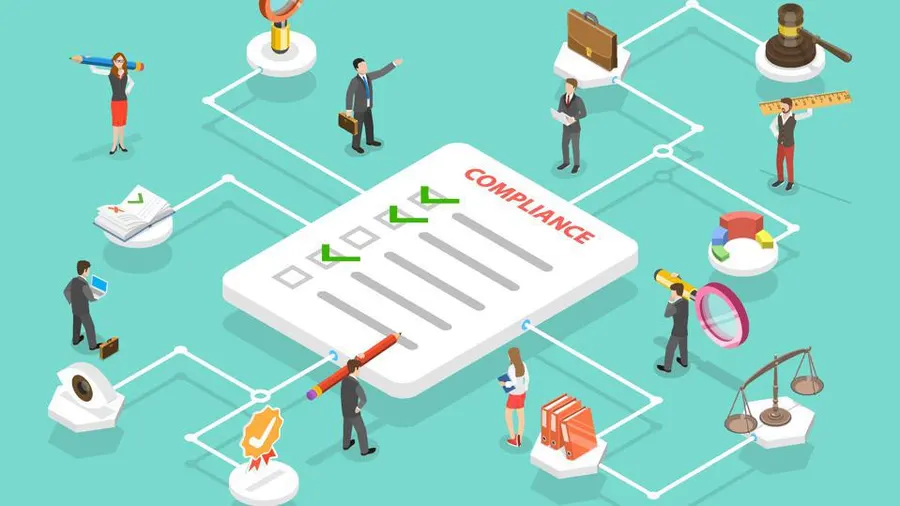Navigating Compliance Challenges with HRMS and Payroll Software
In today’s complex regulatory landscape, businesses face numerous challenges when it comes to regulatory compliance. From ever-changing labour laws to intricate tax regulations, ensuring compliance can be a tedious task for HR staff. However, with the right tools and technology at their disposal businesses can navigate these challenges more effectively and mitigate compliance risks.
What Are Compliance Issues?
Compliance issues refers to those circumstances in which organizations fail to adhere to the rules, policies and procedures that an established business in India must follow. These issues can arise from various facets of an operational business including legal changes, data security concerns, and internal processes which can have serious implications on the business.
Types of issues and how to overcome them:
- Regulatory compliances:
The landscape of regulations is such that it keeps changing. This volatile nature makes it hard for the HR departments to keep track of and let alone to comply.
It is paramount for companies to follow these regulations to avoid reputational damage, legal risks and penalties imposed by the government.
How to Overcome:
To address this challenge, HRMS should make routine updates to their systems to reflect the latest regulatory requirements. Regularly updating software configurations, tax tables, compliance checklists, and other features can help align with current regulations.
Businesses should make the effort to invest in training programs to help HR staff to stay updated on the trends. Empowering the staff with proper tools and resources will also go a long way.
2. Data Privacy and Security:
HRMS stores great amounts of sensitive employee data including personal details, salary information and so on. These are highly valuable information which must be protected from unauthorised access, misuses of such information and must comply with the data protection laws of the state.
How to Overcome:
One way to comply with data security issues is to encrypt data into a secure format with restricted access to only authorised personnel with the appropriate key.
Collecting only those data that is required for the organisation might help with data breaching.
HRMS should clearly define the policies and procedures so HR staff can be trained to securely store, maintain, retrieve valuable information.
3. Data Accuracy and Integrity:
Accuracy and integrity issues poses a significant challenge for the HR staff as inaccuracies can have serious implications on the organisations. Payroll errors, compliance issues, and incorrect reporting are all dangerous to organisations. Inconsistency in data management can undermine the credibility of HR processes and decisions, resulting in legal liabilities, financial losses, and reputational damage.
How to Overcome:
Implementing data validation procedures to detect and prevent data entry errors, duplication, and inconsistencies. By implementing validation checks and error alerts within HRMS to prompt users to review and correct any inaccuracies before data is saved or processed, organisations can significantly reduce errors and loss of data.
Additionally, organizations can leverage automation of HRMS to minimize the risk of manual errors. Timekeeping, payroll, and performance management systems can all be integrated within HRMS to ensure data accuracy and maintain integrity.
Regular data audits and quality assurance checks are also essential for maintaining data accuracy and integrity within HRMS.
4. Employee Classification and Benefits Administration:
The issue of employee classification and benefits administration poses significant compliance risks for organizations, as misidentifying employees or failing to provide mandated benefits can result in legal consequences and financial penalties.
Misclassification arises when organizations incorrectly classify employees as independent contractors so they can avoid providing benefits such as health insurance, retirement plans, and paid time off. This can lead to compliance violations and legal disputes. Failing to provide benefits to eligible employees can also lead to compliance issues.
How to Overcome:
By incorporating features that accurately classify employees based on their employment status, taking into account factors such as the nature of the work and so on, organisations can reduce these risks immensely.
Companies must ensure that HRMS systems consist of tools for managing benefits and administer effectively.
Maintaining self-service options for employees to access and update their benefits information can enhance compliance and transparency.
5. Audit Trails and Documentation:
If organisations don’t maintain proper records of user activities, data changes, and system access then they may struggle to provide proof of compliance. This lack of documentation can result in penalties, legal consequences, and reputational damage.
How to Overcome:
- One solution to this problem is to ensure that HRMS software has the capability to provide detailed audit reports. These reports should capture critical information such as who accessed the system, what actions were performed, and when they occurred. This can help businesses to identify and address an issue and take action quickly.
Conclusion:
Businesses are often subject to heightened scrutiny and the pressure to comply with the constantly changing regulatory policies requires tremendous effort to navigate through. By automating compliance processes, HRMS and payroll software from Peopleworks can help organizations to stay ahead of regulatory changes and effectively maintain compliance.
